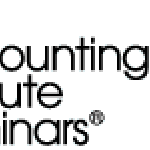- Industry: Accounting
- Number of terms: 7464
- Number of blossaries: 0
- Company Profile:
If a major event comes to the auditor's attention between the report date and issuance of the report, the financial statements may include the event as an adjustment or disclosure. The auditor dual dates the audit report (as of the end of fieldwork, except footnote XX, which is dated later).
Industry:Accounting
Audit procedures are classified as substantive tests or tests of controls. If a procedure provides both types of evidence it is a dual-purpose test.
Industry:Accounting
Cheque Reasonableness, validity, limit, and completeness tests that are programmed routines designed to cheque input data and processing results for completeness, accuracy and reasonableness.
Industry:Accounting
The income tax provision (expense) shown on an income statement divided by pretax income. This differs from the statutory rate because of deductions, credits, and exclusions.
Industry:Accounting
Reasonable assurance that the entity’s operational objectives are achieved, that published financial statements are reliably prepared, and applicable laws and regulations are complied with.
Industry:Accounting
Producing a desired outcome. An audit procedure is effective if the evidence supports a correct conclusion.
Industry:Accounting
Is scrambling data so it is meaningless to anyone but the intended recipient, who has the key to unscramble the data.
Industry:Accounting
A letter that represents the understanding about the engagement between the client and the CPA. The letter identifies the financial statements and describes the nature of procedures to be performed. It includes an explanation of the objectives of the procedures, an explanation that the financial information is the responsibility of the company's management, and a description of the form of report.
Industry:Accounting
The control environment is the attitude, awareness, and actions of the board, management, owners, and others about importance of control. It includes integrity and ethical rules, commitment to competence, board or audit committee participation, organisation structure, assignment of authority and responsibility, and human resource policies and practices.
Industry:Accounting
